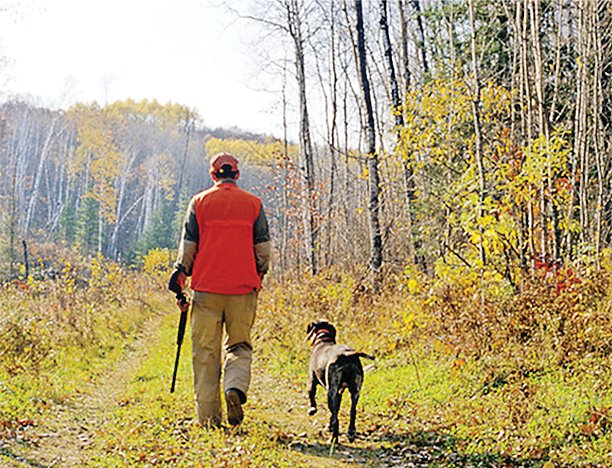Support the Timberjay by making a donation.
Interest in small game hunting dropping sharply
License sales down 32 percent over the past 18 years, part of a trend of declining interest among youth
REGIONAL— Just 67,765 grouse hunters went out last year in search of Minnesota’s most popular game bird. That’s according to an annual hunter survey conducted by the state’s Department of …
This item is available in full to subscribers.
Attention subscribers
To continue reading, you will need to either log in to your subscriber account, below, or purchase a new subscription.
Please log in to continue |
Interest in small game hunting dropping sharply
License sales down 32 percent over the past 18 years, part of a trend of declining interest among youth
REGIONAL— Just 67,765 grouse hunters went out last year in search of Minnesota’s most popular game bird. That’s according to an annual hunter survey conducted by the state’s Department of Natural Resources. That’s the fewest grouse hunters in the 40 years since the DNR started conducting the survey and it’s consistent with a trend being seen across the board for traditional outdoor pursuits, like hunting.
Hunting small game, like grouse, waterfowl, and rabbits, was once the way that most young people were introduced to the sport. “Small game hunting was traditionally the entry level for a lot of hunters,” said Tom Rusch, Tower DNR Area Wildlife Manager. “It’s how they learned safe gun handling and other skills.”
But far fewer people are hunting small game these days, and those who still do, tend to be older. “We’re not seeing kids hunting much these days,” said Rusch.
The sale of small game licenses in Minnesota illustrates the trend. As recently as 2000, hunters purchased about 330,000 small game licenses in the state. Last year, it was just over 225,000, a 32-percent decline in just 18 years. The downward trend in license sales was modest up until 2013, when the bottom fell out.
The DNR, sportsmen’s organizations and the Minnesota Legislature have tried to encourage more youth interest in hunting, with special Take-a-Kid-Hunting days and special seasons like this weekend’s four-day MEA weekend youth deer hunting season.
But the erosion in youth hunting appears to be continuing. The signs of the declining interest can be found locally, where regular firearm and hunter safety courses, which used to be a rite of passage for many kids in northern Minnesota, are disappearing. Rusch said classes that used to be held in places like Tower, Ely, and other small communities are rarely held anymore. And even larger communities, like Virginia, are cancelling classes due to limited interest.
The declining interest is also affecting conservation groups that used to draw active members from the hunting community. The Minnesota Waterfowl Association, just last month, announced it was folding due to their inability to attract interest from younger hunters.
Effects on habitat
For many people, an interest in hunting was the first step in getting them engaged in conservation efforts. Hunters have been the mainstay of groups like Ducks Unlimted, the Ruffed Grouse Society, and the Minnesota Deer Hunters Association, which have raised millions of dollars over the years for habitat work.
Hunter license fees also pay for much of the wildlife habitat work undertaken by the DNR. Indeed, hunters generate the largest portion of the funding that pays for managing wildlife and their habitats and the decline in small game licenses has translated into $1 million less funding than the DNR received in the 1990s.
This estimated loss doesn’t account for other hunting-related expenditures including gun and ammunition sales, visits to gas stations and restaurants, and stays at lodging facilities – all things that benefit local economies.
“This isn’t just about having less money to do conservation work,” said Nicole Davros, a farmland wildlife research supervisor for the DNR. “It’s also a hit to our rural economies. Simply put, fewer hunters means fewer dollars into those small towns – whether it’s fewer sandwiches and candy bars being sold, and ultimately fewer jobs and businesses being supported in these areas.”
According to the DNR, many factors appear to be contributing to the decline in hunter interest, including competing activities, time constraints, limited access to hunting lands and changing relationships with the natural world. Amid the challenges, one effective way to recruit and retain hunters is to provide continued mentorship.
“The key is to continue to support and engage our new hunters,” Davros said. “Don’t just take a person out once. Keep asking them to hunt with you and provide continued support as they learn.”







